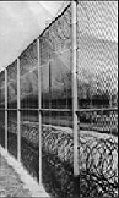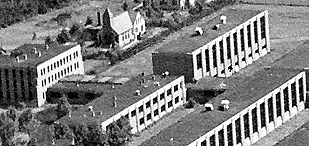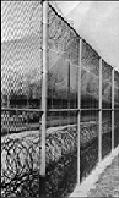Fr. Pierre Raphael
In your gracious note (above) opening our web excerpts presentation of your book Inside Rikers Island, you thank NYCHS for putting your words into cyberspace. Rather, we express our thanks to you: for writing this excellent and deeply moving account of your Rikers chaplaincy, and for allowing us to share extensive portions of it with visitors to our web site.
Additionally, we are indebted to you and Sister Simone, Abraham House co-founder, for making available to us early newsletters and brochures from its development and for allowing myself and my fellow correction history colleague Gerald Schultz to tour your facility and interview you both on camera about it. I plan to add to our Abraham House history web pages some images and audio from that video tape.
Taking off both my hat as the retired but still active director of histroical services for NYC DOC and my hat as NYCHS general secretary/ webmaster, and speaking solely as one student of correction history, I thank you and all associated with Abraham House for raising and maintaining this relatively rare ray of hope in the otherwise dark and gloomy prospect emerging from the annals of penology.
For me personally, Abraham House underscores a point evident from my own readings of correctional history: that "offender rehabilitation" programs in big institutions (while worth undertaking for many reasons, including society's own need to retain its humane values) seem to work there not as well as programs carried out in smaller, home-like residences that create a sense of extended family or community.
The huge institution tends, despite some enlightened efforts to ameliorate the effect, to depersonalize and "numb" the individual inmate whereas the shared residence approach -- whether called a home, a house or a cottage -- provides
the interpersonal supports and encouragements, from both real family and residence "family," that an offender seems to need to grow as a person, to see others as persons too, and to change his life around accordingly.
A common characteristic of historic rehabilitation innovations to ameliorate the large institution's numbing effect -- for example, the "squads" in the early days at Elmira Reformatory, the "cottages" in the early days at Bedford Hills, the early Mutual Welfare Leagues of Thomas Mott Osborne, the athletic teams of Sing Sing Warden Lewis E. Lawes, et al -- appears to be some attempt at creating a sense of family or community.
I view Abraham House as fitting in this heroic but all too thin historic line of alternatives to the near-inevitable impersonalization of massive institutions of incarceration.
So I personally thank you because your Abraham House and its continued operation have made my studying correction history less discouraging.
The ultimate prison is despair but Abraham House is all about hope. That is why it is so liberating, not only for its residents but for the rest of us as well.
Thomas McCarthy





